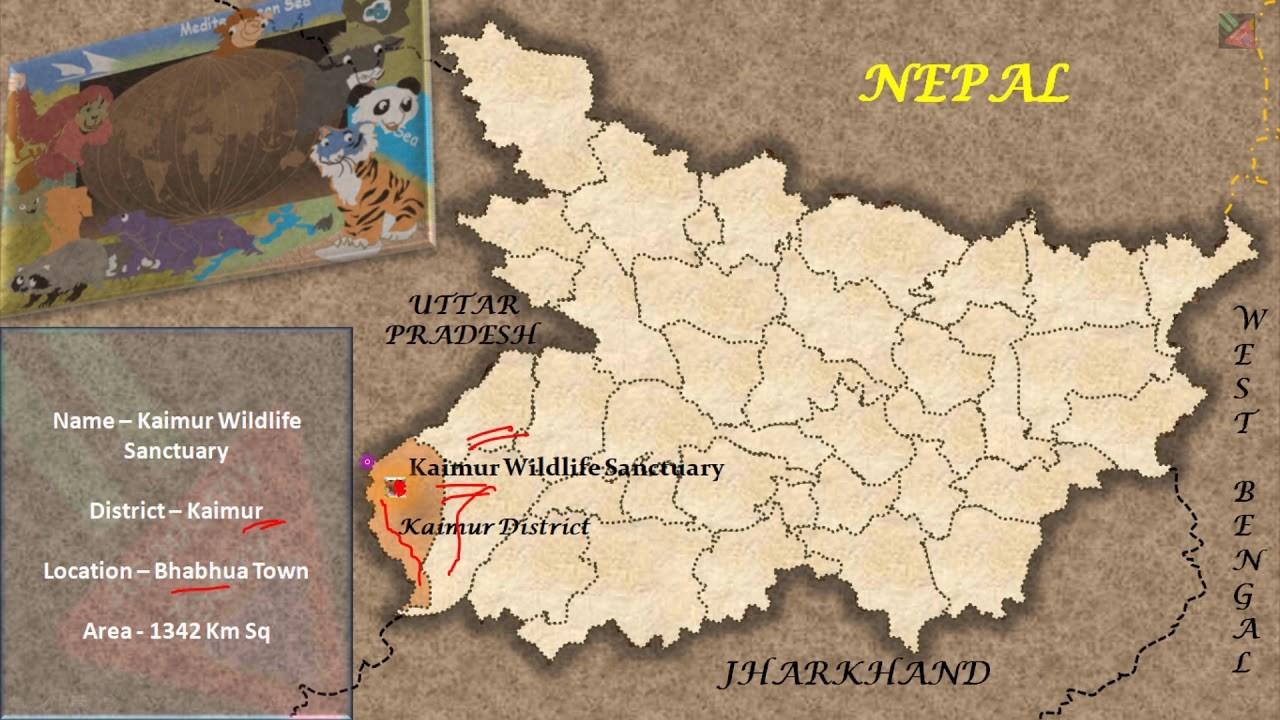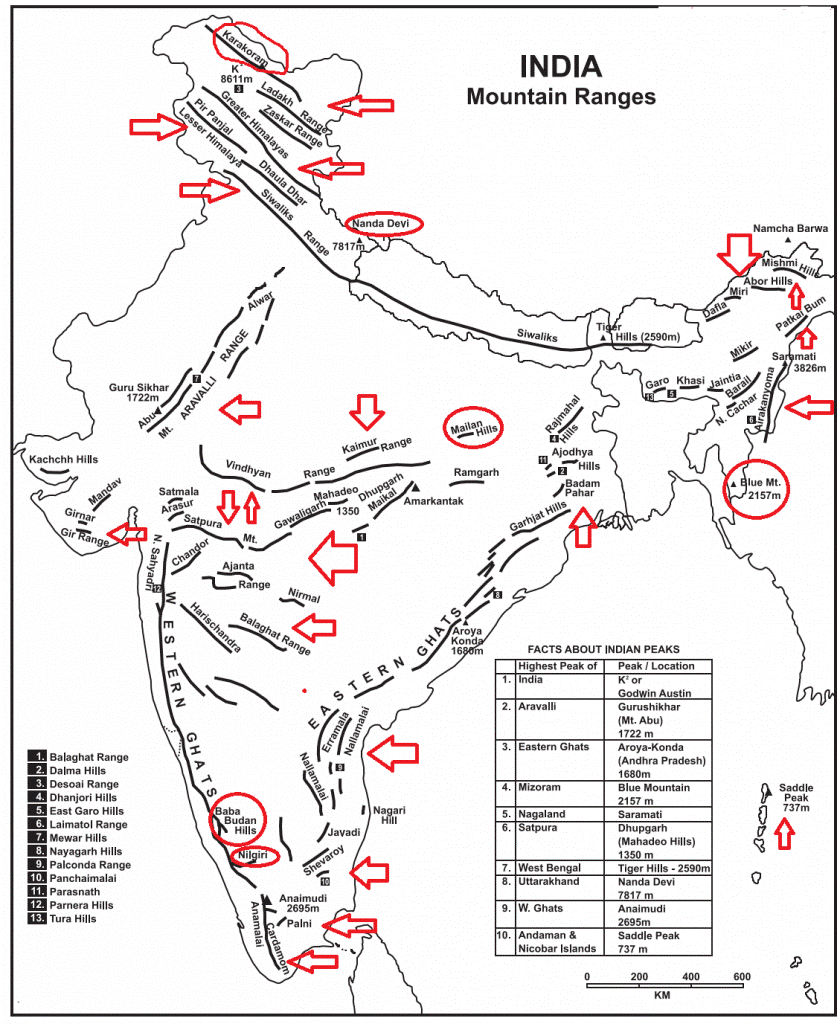Description

Disclaimer: Copyright infringement not intended
In News
- Officials have been working towards obtaining the National Tiger Reserve Conservation Authority’s approval for declaring Kaimur Wildlife Sanctuary as Bihar's 2nd tiger reserve.
Kaimur Wildlife Sanctuary
Details
- Kaimur Wildlife Sanctuary is situated in Kaimur District and Rohtas District of Bihar.
- It is the largest sanctuary in the state and extended in the plateaued landscape of Kaimur Range.
- It was established in 1979.
- The major forest types are Tropical Dry Mixed Deciduous, Dry Sal Forests, Boswellia Forests and Dry Bamboo Brakes.
- It is home to rare and endangered flora and fauna. Rohtasgarh Fort and Shergarh Fort are also located in these forests.
- It also has numerous Megaliths, Rock painting of prehistoric age and stone inscription from a bygone era.
- The Government of Bihar has planned to developed it into Tiger Reserve.

Geography
- This Wildlife Sanctuary is located in Rohtas Plateau and Kaimur plateau of Kaimur Range in the south-western part of Bihar.
- In the valley portions there are several waterfalls of which the finest are Karkat Waterfall, Manjhar Kund, Dhua Kund, Tutla Bhawani waterfall, Geeta ghat waterfall, Kashish Waterfall, and Telhar.
- There are several Dams and lakes, including Anupam Lake, Karamchat dam and Kohira Dam.
Fauna
- The main animals found at Kaimur Wildlife Sanctuary are Bengal tigers, Indian leopards, Indian boars, Indian pangolins, sloth bears, sambar deers, Indian muntjacs, Four-horned antelopes, chitals, nilgais and various species of reptiles, insects and butterflies.
- It is home to more than 70 species of resident birds, which stay here all year around. The number increases in the migratory season i.e. during the winters, when there is an influx of birds from the Central Asian region.
- Common birds species are peafowl, grey partridge, quail, Malabar, pied hornbill, swallow, nightjar, drongo, paradise flycatcher, kingfisher, bulbul, mynas, pigeon, wood pigeon, blue jay, owl, falcon, kites, eastern imperial eagle, greater spotted eagle, white-tailed eagle, Pallas's fish eagle, grey-headed fish eagle, and the lesser kestrel and vultures.
- Birds such as the lesser white-fronted goose, ferruginous duck, Baer's pochard duck and lesser adjutant, greater adjutant, black-necked stork, and Asian openbill stork migrate from Central Asia to the park during winter.
- Fishes are found in Anupam Lake and Kalidah near Rameshwar kund. Among snakes, cobra and kraits are of common occurrence while pythons are occasionally seen.
Kaimur Range
- Kaimur Range is the eastern portion of the Vindhya Range, about 483 kilometres long, extending from around Katangi in Jabalpur district of Madhya Pradesh to around Sasaram in Rohtas district of Bihar. It passes through the Rewa and Mirzapur divisions.
- The range never rises more than a few hundred metres above the surrounding plains and has a maximum width of around 80 km.
- The southern part of the Vindhyan Range up to Katangi is called Bhander Range. Beyond this point the escarpment enclosing the land-locked valley of Sirampur and the hill range in continuation is called the Kaimur Range.
- Kaimur escarpment forms the watershed or divide for two of the major rivers of peninsular India, the Son on the south and Tamsa or Tons on the north.
- A series of plateaus runs along the Kaimur Range. These fluvial plateaus, consists of a series of descending plateaus, starting with the Panna Plateau in the west, followed by Bhander Plateau and Rewa Plateau and ending with Rohtas Plateau in the east.
Protected areas in the Kaimur Range include:
- Kaimoor Wildlife Sanctuary in Uttar Pradesh
- Chandra Prabha Wildlife Sanctuary in Uttar Pradesh
- Kaimur Wildlife Sanctuary in Bihar

|
PRACTICE QUESTION
Q. Consider the following statements:
1.Kaimur Wildlife Sanctuary has numerous Megaliths, Rock paintings of prehistoric age and stone inscription from a bygone era.
2.Kaimur Wildlife Sanctuary has several Dams and lakes, including Anupam Lake, Karamchat dam and Kohira Dam.
3.Kaimur Range is the western portion of the Vindhya Range.
How many of the above statements are correct?
A) Only 1
B) Only 2
C) All 3
D) None
Answer: B) Only 2
|













